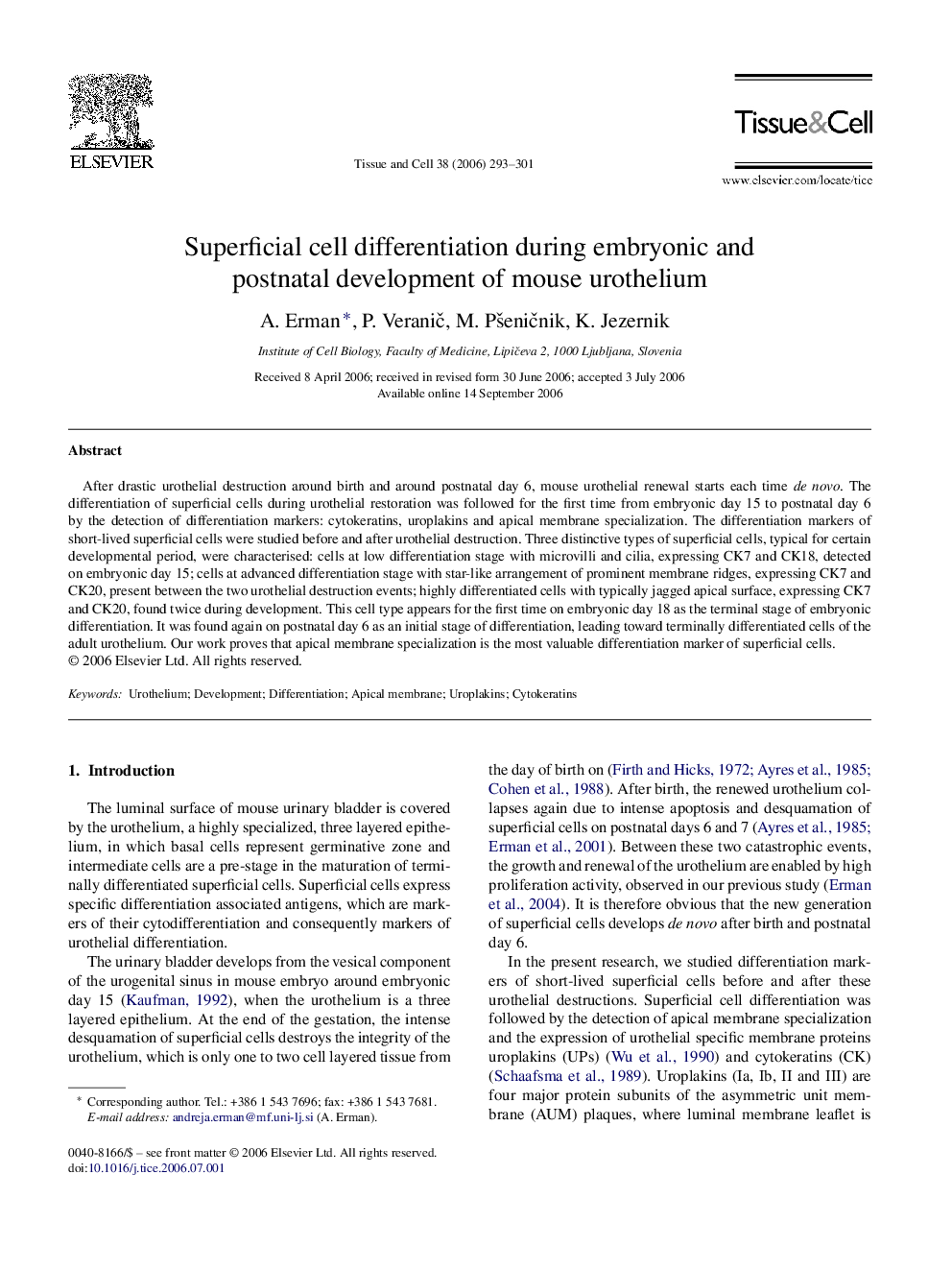| Article ID | Journal | Published Year | Pages | File Type |
|---|---|---|---|---|
| 2204201 | Tissue and Cell | 2006 | 9 Pages |
After drastic urothelial destruction around birth and around postnatal day 6, mouse urothelial renewal starts each time de novo. The differentiation of superficial cells during urothelial restoration was followed for the first time from embryonic day 15 to postnatal day 6 by the detection of differentiation markers: cytokeratins, uroplakins and apical membrane specialization. The differentiation markers of short-lived superficial cells were studied before and after urothelial destruction. Three distinctive types of superficial cells, typical for certain developmental period, were characterised: cells at low differentiation stage with microvilli and cilia, expressing CK7 and CK18, detected on embryonic day 15; cells at advanced differentiation stage with star-like arrangement of prominent membrane ridges, expressing CK7 and CK20, present between the two urothelial destruction events; highly differentiated cells with typically jagged apical surface, expressing CK7 and CK20, found twice during development. This cell type appears for the first time on embryonic day 18 as the terminal stage of embryonic differentiation. It was found again on postnatal day 6 as an initial stage of differentiation, leading toward terminally differentiated cells of the adult urothelium. Our work proves that apical membrane specialization is the most valuable differentiation marker of superficial cells.
